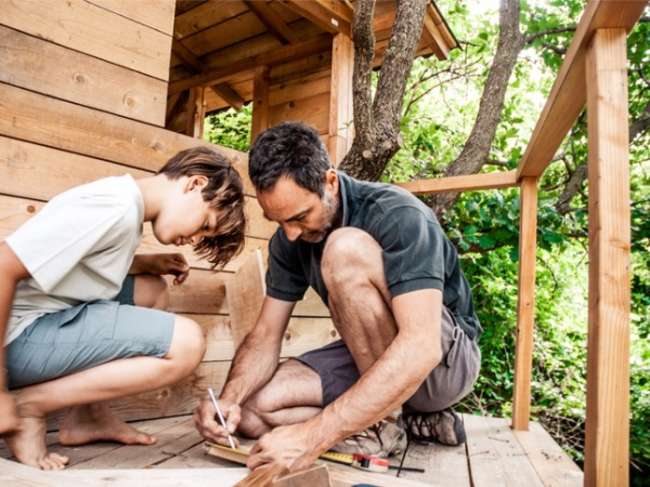

We may earn revenue from the products available on this page and participate in affiliate programs. Learn More ›
Home Advice You Can Trust
Tips, tricks & ideas for a better home and yard, delivered to your inbox daily.
By signing up you agree to our Terms of Service and Privacy Policy.
Building a Treehouse
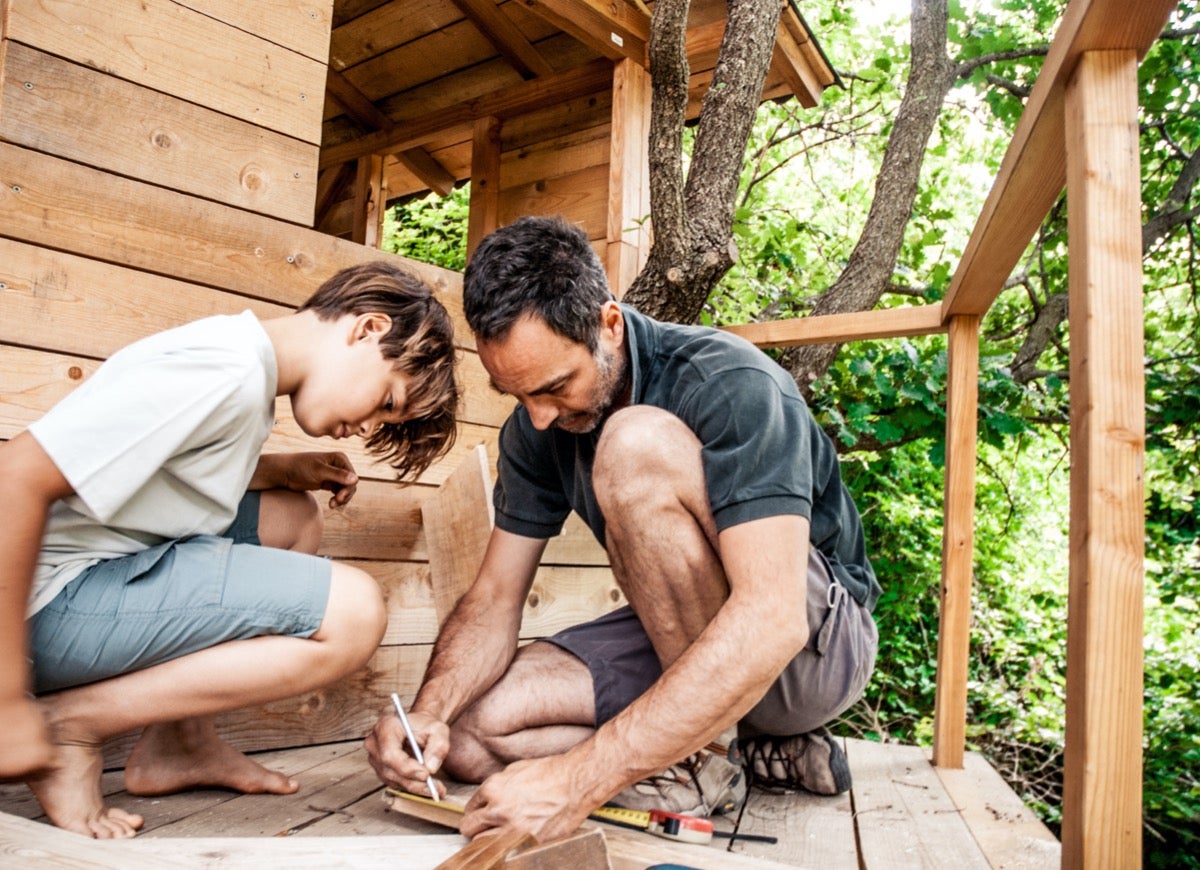
Many memorable childhoods involve the fun adventure of a treehouse. These days treehouses are more than a platform in the treetops. Themes, balconies, and clubhouses that don’t even require a tree can bring hours of backyard fun for a new generation of children.
Today’s treehouse ideas stray away from the traditional into the whimsical or luxurious. They can also help you work around the limitations of your landscape. No trees—that doesn’t mean no treehouse. Two trees—there’s a solution for that, too. Take a look and get inspiration for a playhouse that will make even grown-ups jealous.
Traditional Treehouse
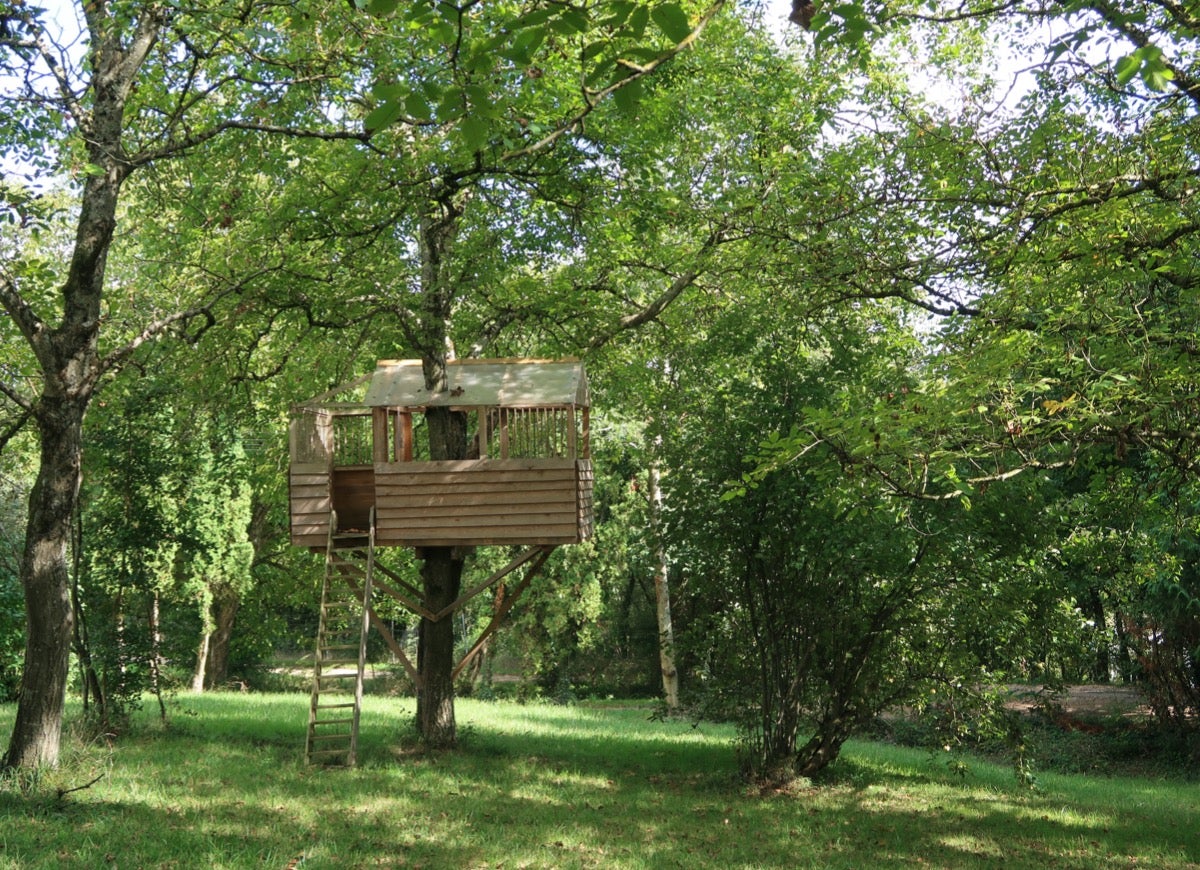
Kid-pleasing treehouses don’t have to be extra fancy. A traditional treehouse typically features a platform, sides for safety, and a ladder. Sun or rain protection doesn’t hurt either. Simplicity lets kids use their imagination for their adventures. The box-in-the-trees set up easily transforms into a battleship, train, or outpost with the help of an imaginative mood.
Related: 11 Cave Homes You Can Book on Airbnb for a Creepy Cool Getaway
Freestanding Treehouse
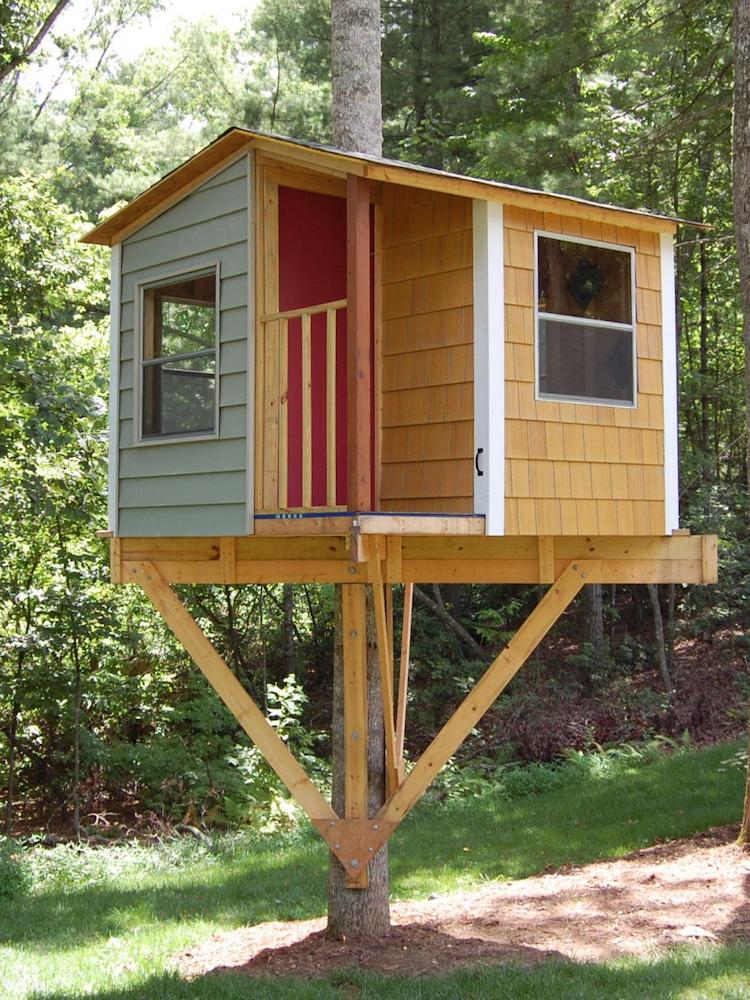
Not every tree has the base and branches to support a traditional treehouse. Freestanding models like this one (project plans available on Etsy) solve that problem. With these treehouses, you create a stable base around a single tree, branches or not. Braces offer stability and make the treehouse just as functional as one that weaves through a web of branches.
Fancy Treehouse
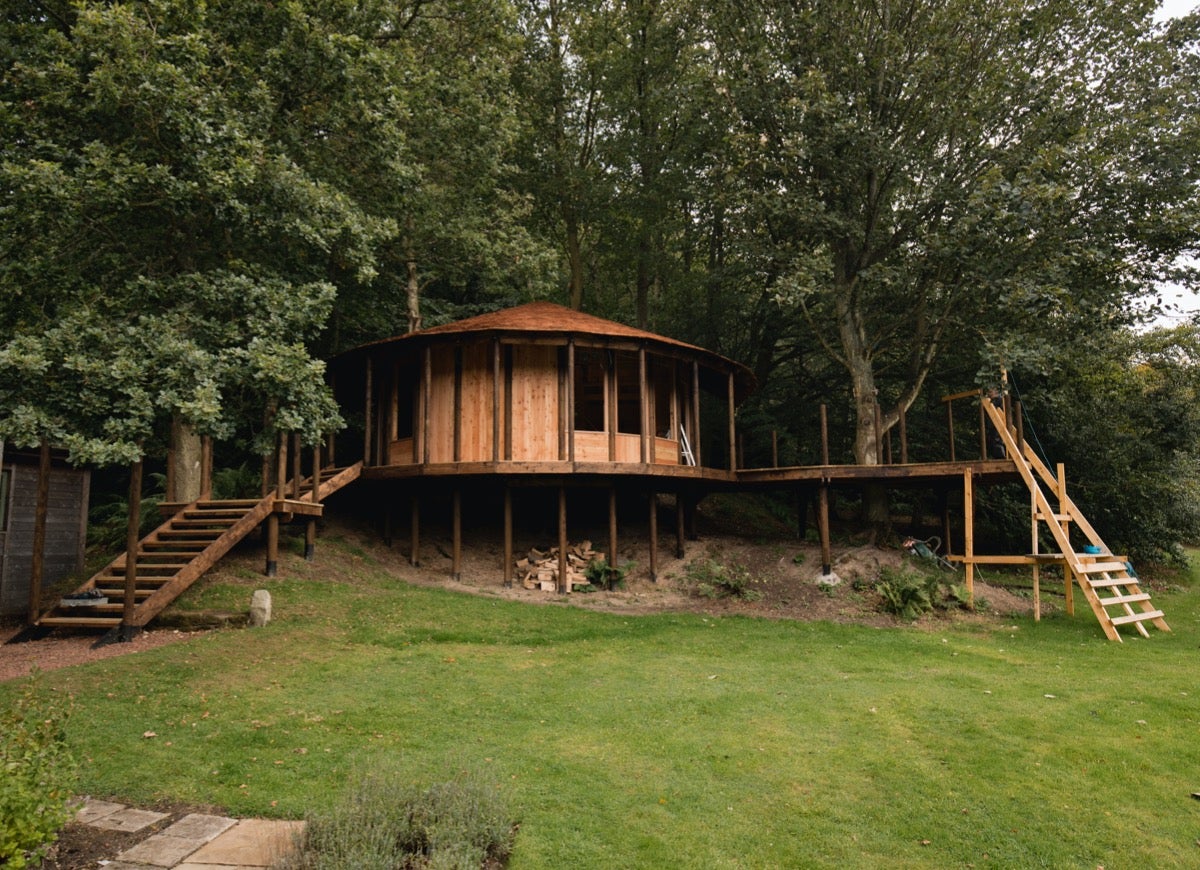
Some backyards provide ample trees and space for architectural exploration. When there’s space, why not fill it? A multi-platform design can span across several trees or extend from a single main platform. A fancy treehouse creates room for more kids, too. If the backyard acts as a gathering place for a neighborhood’s worth of kids, a fancy model could be worth the time and financial investment.
Boat-Shaped Treehouse
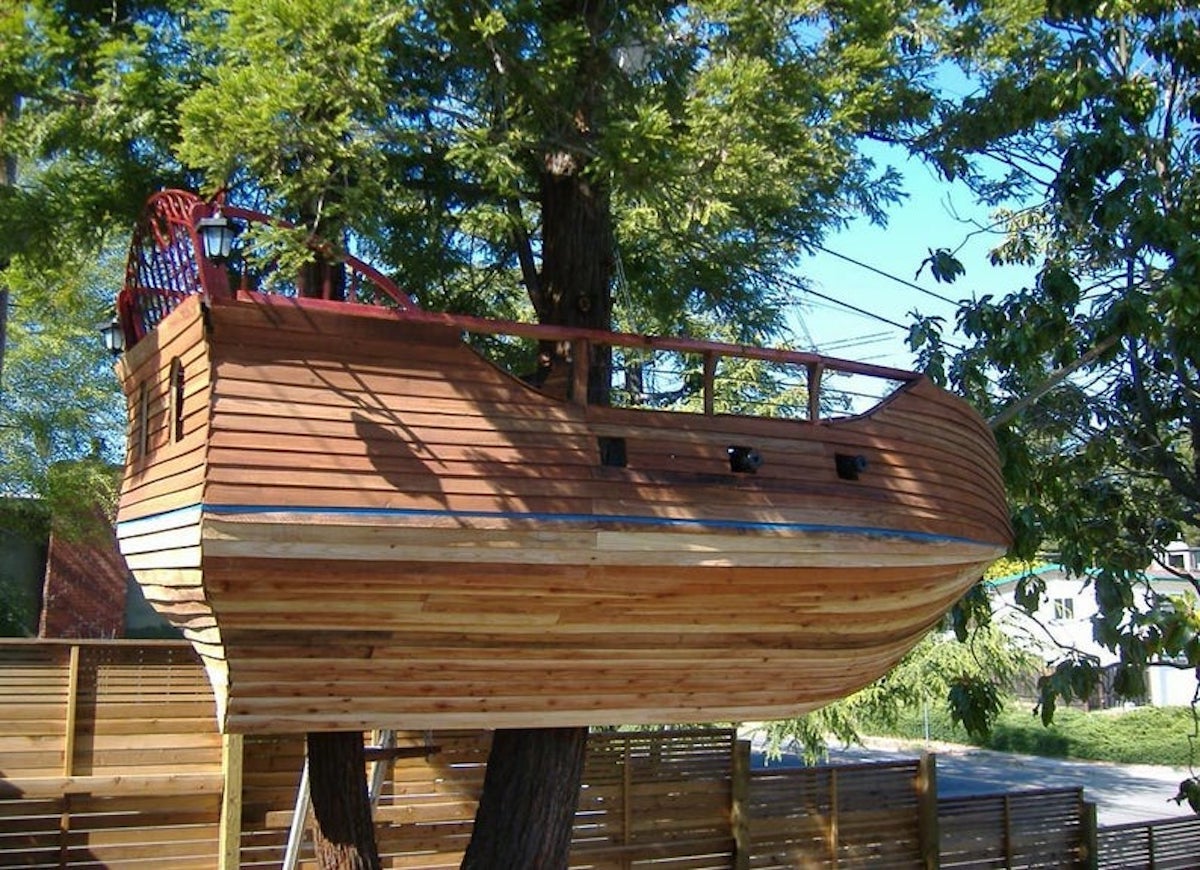
Kids can sail the seven seas in a treehouse that rivals the likes of sailing ships of old. This one might take a little more DIY experience (project plans available on Etsy), but it will be the talk of the neighborhood. Up high, kids can pretend they’re sailing to Neverland or are ready to explore uncharted waters. They don’t need to be ocean aficionados to appreciate a treehouse this unique.
Treehouse on Stilts
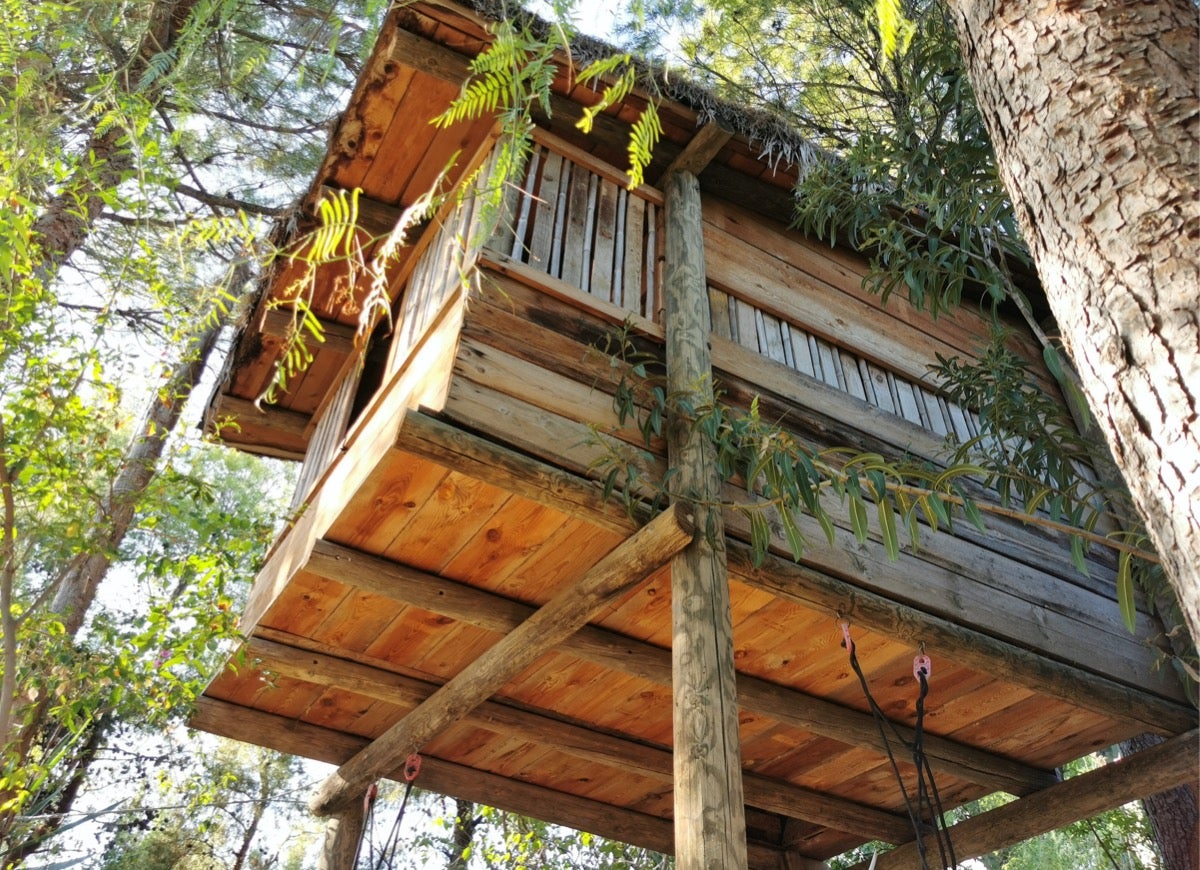
Built on stilts, this design doesn’t necessarily even need trees. Yes, trees can act as braces, but a properly installed pole can do that, too. Of course, trees offer camouflage for kids who want to play incognito. But a backyard that lacks trees of the right shape and size can still offer a fun place to build a treehouse on stilts.
Two-Tree Treehouse
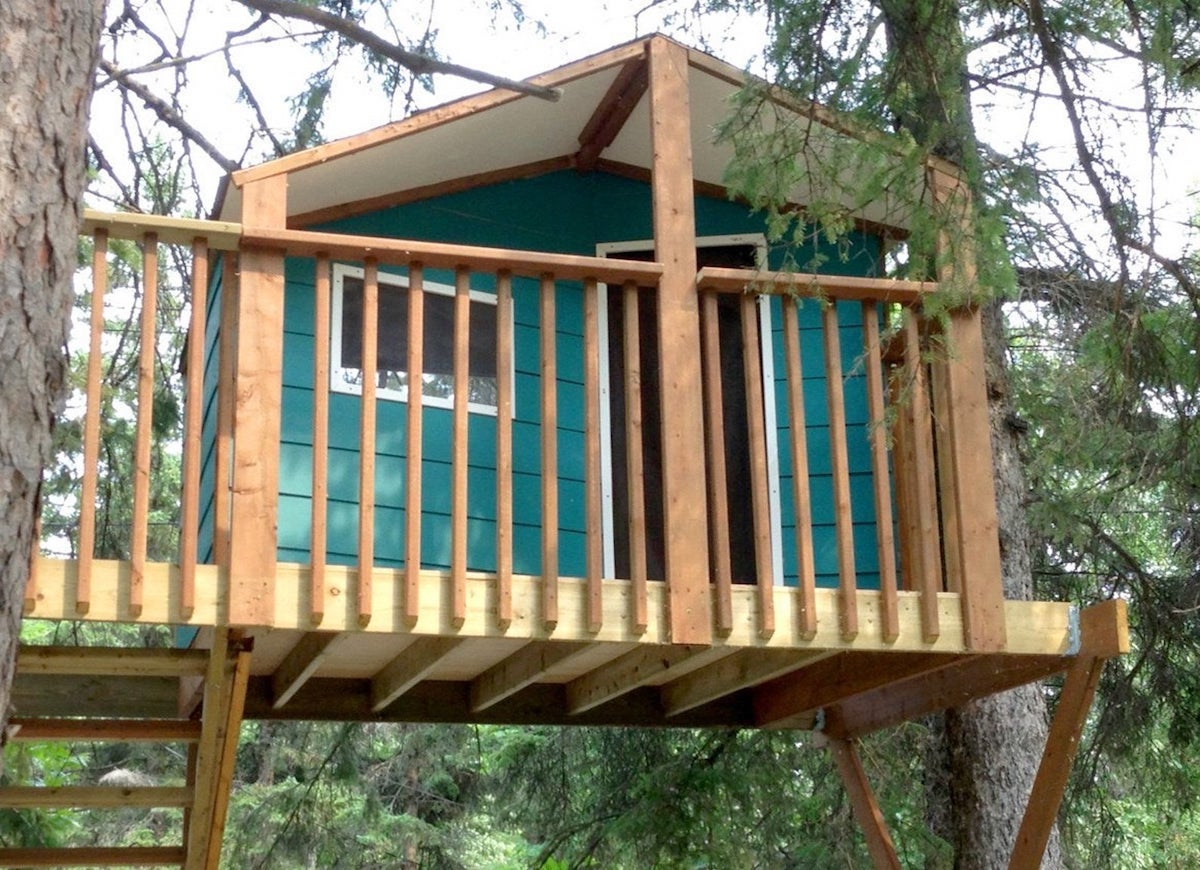
Two trees are better than one, at least when it comes to a treehouse. Here’s another solution for trees that don’t necessarily have the branch base to support a traditional model (project plans available on Etsy). The two trees act as the base for the platform. In between, there’s room for play come rain or shine.
Treehouse with a Porch
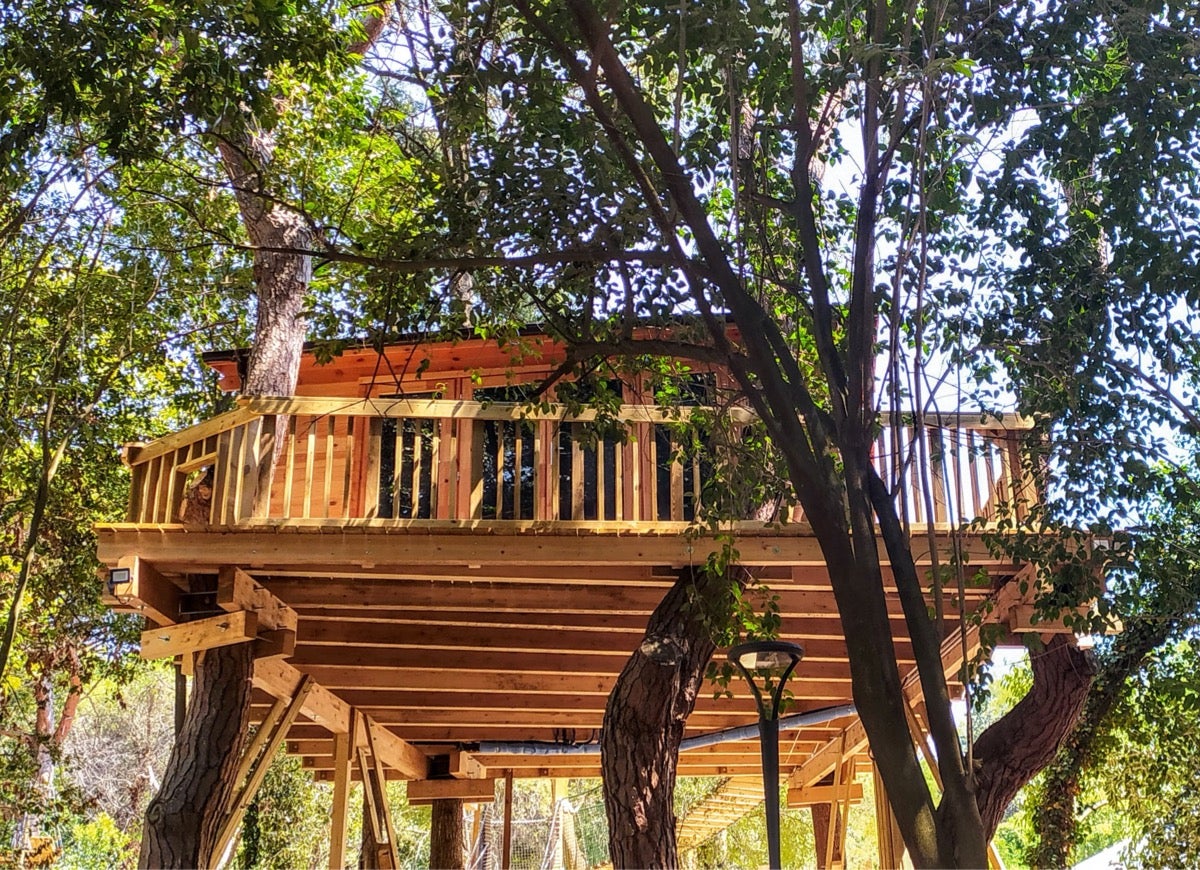
When there’s space to spare, a porch provides room for indoor and outdoor treehouse play. Take advantage of trees that are close together or cut back on indoor space to leave more for outdoor play. This model features a wrap-around design, but even a small porch gives kids more space to roam.
Treehouse with a Balcony
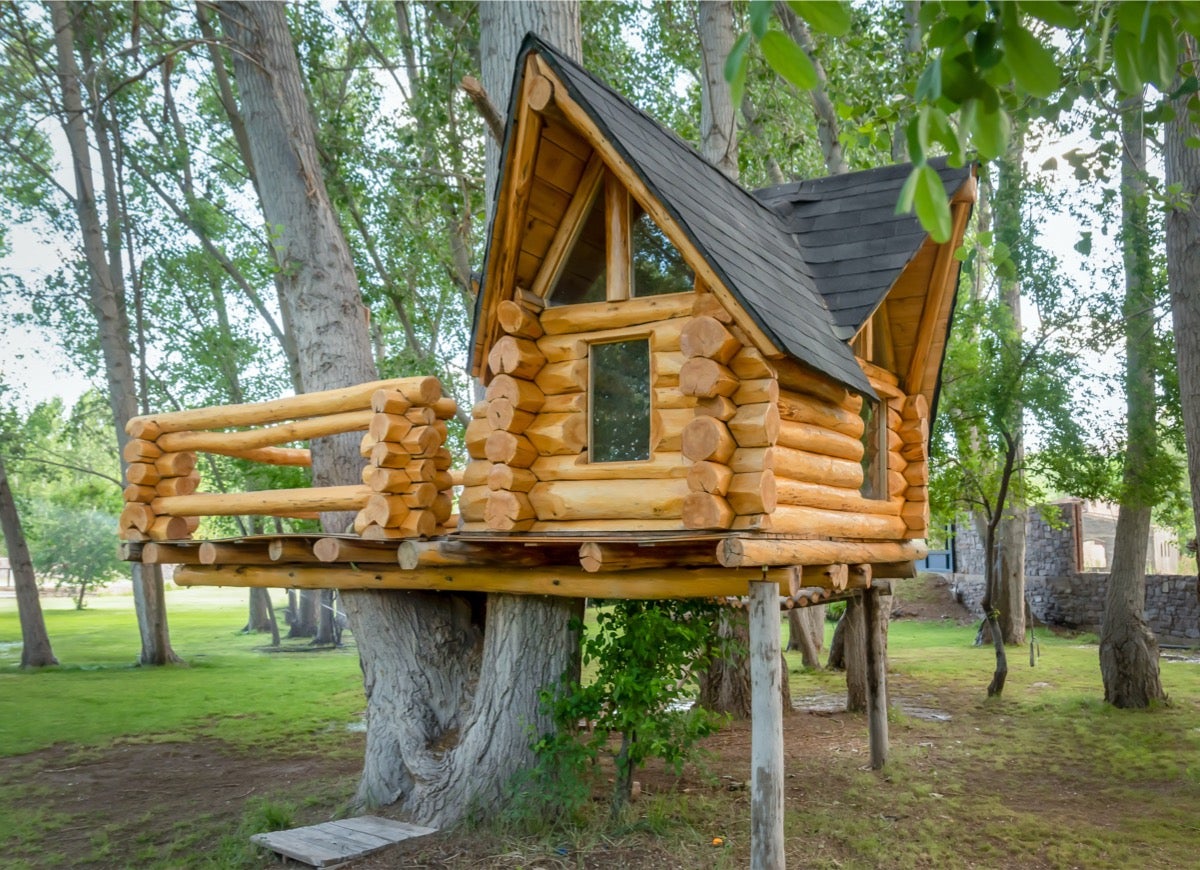
If there’s no room for a porch, why not add a balcony instead? With the right design, you’ll get more square footage for outdoor treetop play. Balconies are also a way to model the treehouse after the main house. Mimicking the big house in miniature unifies the entire look of the property.
Tent Treehouse
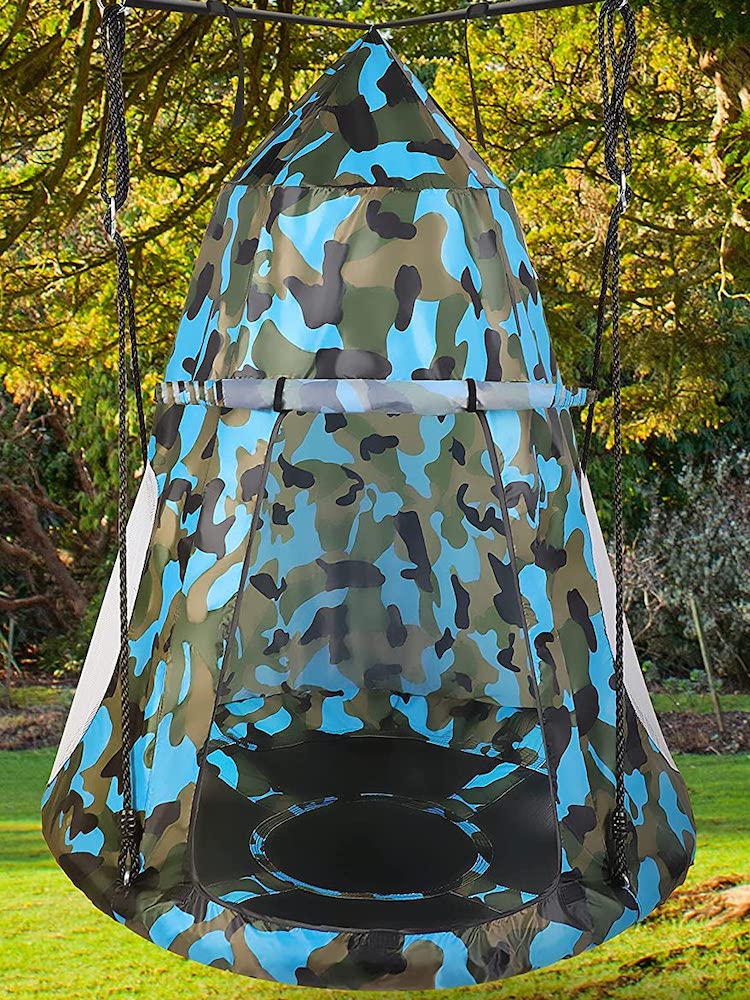
Tent treehouses keep things simple and inexpensive. They can also be set up within a few minutes of arrival. This type of getaway doesn’t require carpentry skills to complete (available on Amazon). Plus, it’s an option that works in small backyards with a single tree. This seasonal option prevents a kid’s playhouse from taking over the backyard because it can be removed when it’s time for entertaining.
Pagoda Treehouse
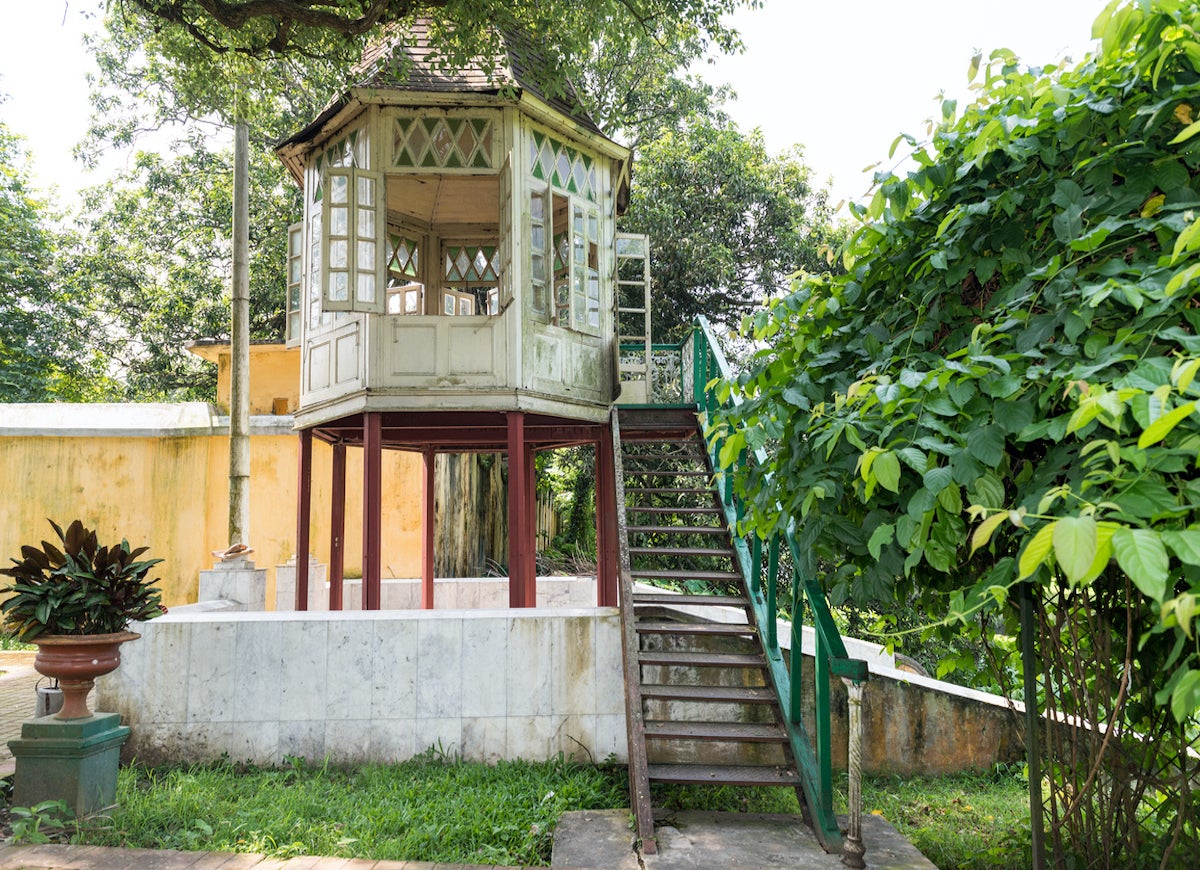
A touch of glamorous architecture can transport kids to a different place and time. It also works well for those who want to give their backyard a theme with Eastern influence. This type of design can also complement landscaping that includes rock gardens, cultivated trees, and other elements that lean toward the Asian continent.
A-Frame Treehouse
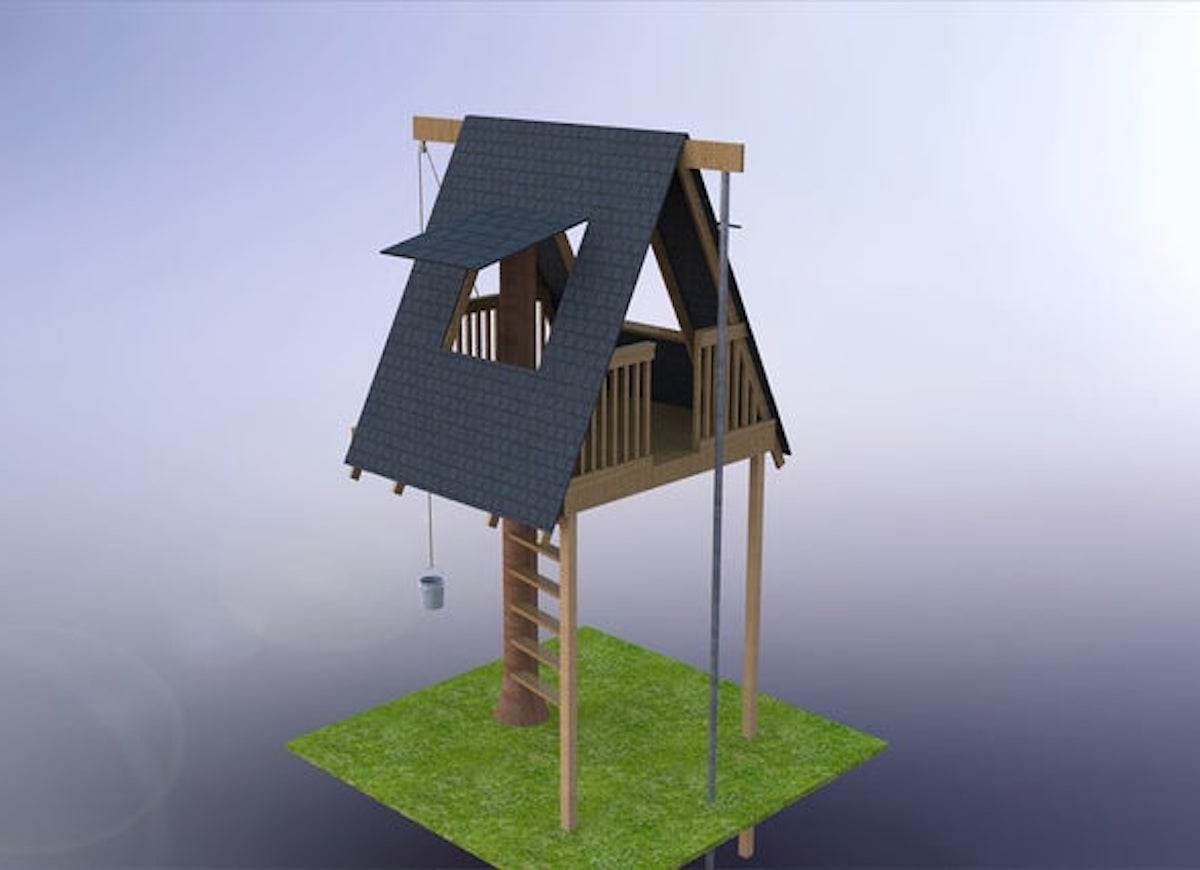
The classic A-frame makes efficient use of materials and space. This no-nonsense design (project plans available on Etsy) also creates a summer camp feel. In a woodsy backyard, it will fit right in. The smart use of materials (and easily constructed design) makes sure kids get sun and rain protection with a maximum amount of interior play space.
Tunnel Treehouse
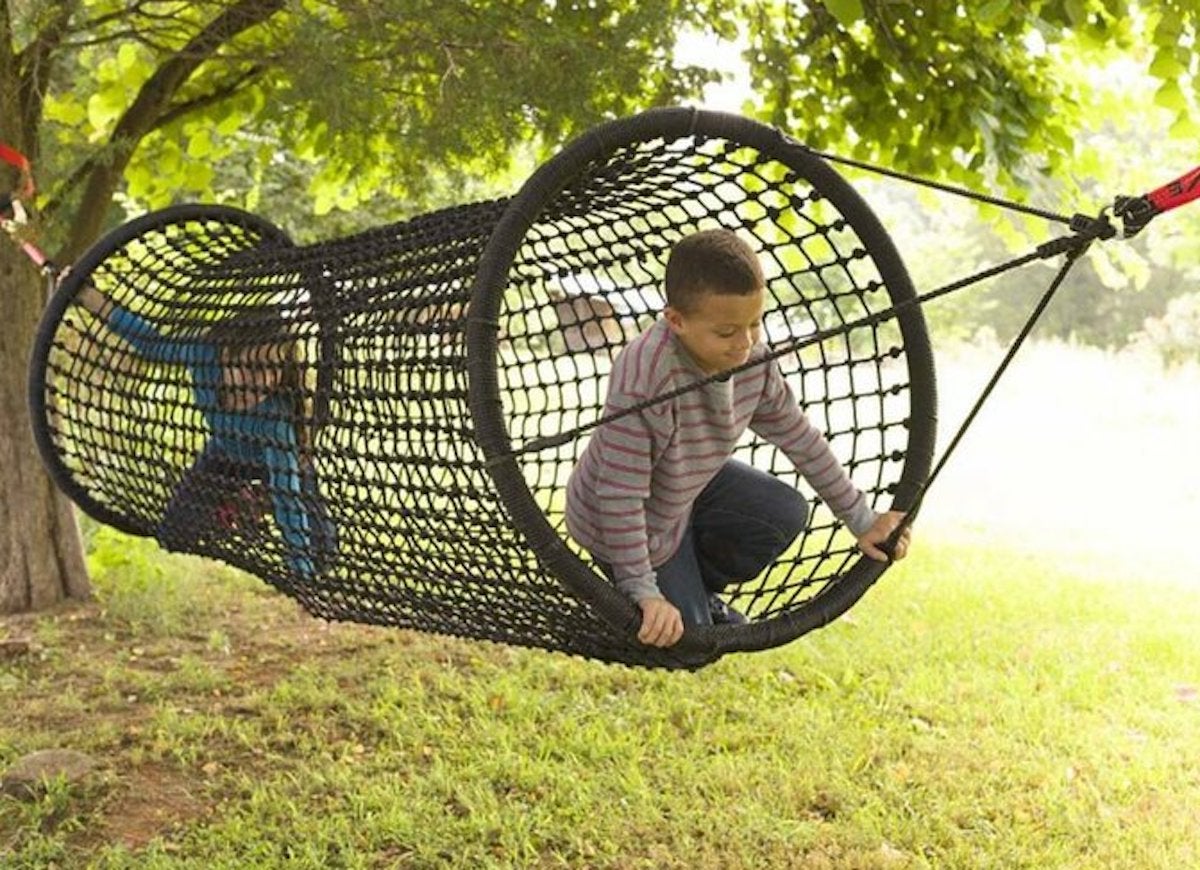
Tunnel treehouses can come and go as the mood hits the kids or as opportunity strikes. This type (available on Wayfair) requires two trees or sturdy poles and is quick to put up and take down. Think of it as a temporary treehouse that works well in yards of all sizes. When not in use, tunnel treehouses store out of sight.

Everything You Need for a Lush and Healthy Lawn
Keeping your grass green and your plants thriving doesn’t just take a green thumb—it starts with the right tools and supplies.